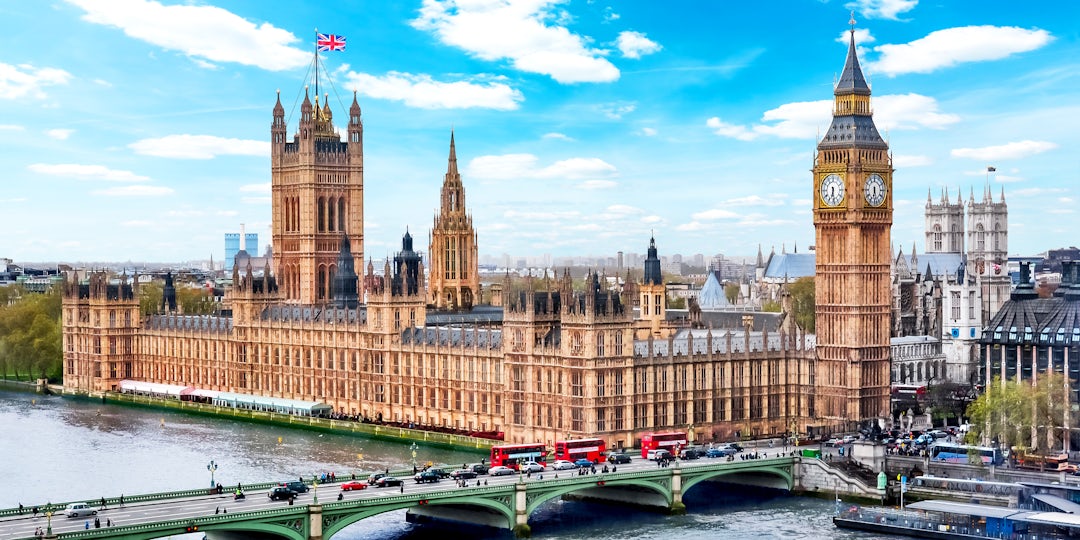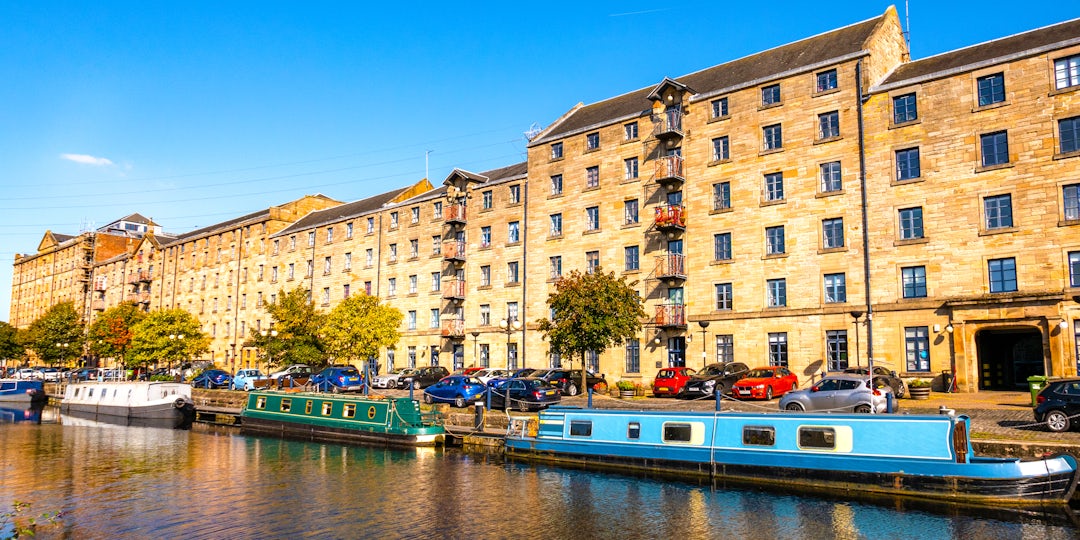


Best time to visit Ireland
Discover the Green Island at any time of the year
Plan your Trip
Your tailor-made itinerary – No cost, no commitment
Excellent
4.5 of 5
4,542Reviews
Excellent
Our expert recommendation
The best time to visit Ireland is between May and September. There is less chance of rain and the weather is ideal for camping, hiking and a round trip. However, the best time to visit may vary depending on your preferences and planned activities. Get important information and tips for planning your trip here.

Antonia Mikulasch
Travel expert for Ireland
Updated on 06/19/2025
Plan for free
Custom holiday packages and trips that fit your budget
Personalized for you
Itineraries built exactly to your needs
Private VIP guides
A personal English-speaking, native-European travel expert for every step
Peace-of-mind support
Full service assistance before, during, and after your trip
Ireland owes its lush greenery to the abundance of rain. The climate is generally mild. This means that temperatures rarely climb above 68°F in summer, but rarely fall below zero degrees in winter. With the right clothing, any time of year is suitable for exploring Ireland. For those who value as little rain as possible, the best time to visit Ireland is spring to fall. The months of May and September in particular promise dry and sunny weather.

Ireland in Spring
Spring in Ireland is truly magical. As the days grow longer and the first warm rays of sunshine arrive, flowers bloom, trees begin to bud, and the landscape turns a vibrant shade of green.
April and May are especially beautiful months to visit. In fact, April, June, July, and September typically have the fewest rainy days. By May, temperatures often reach around 59°F, making it a great time for road trips or hiking through Ireland’s rolling hills and coastal trails.

Ireland in Summer
Summer is a great time to visit Ireland if you prefer warmer weather. From June through early September, daytime temperatures can reach up to 68°F, with July being the warmest month. In August, the sea is at its most inviting for a refreshing swim.
While occasional rain showers or thunderstorms are common, they tend to pass quickly. One of the biggest perks of summer in Ireland is the long daylight hours, giving you plenty of time to enjoy scenic road trips, coastal walks, or mountain hikes.

Ireland in the Fall
Autumn is one of the best times to visit Ireland. Even if it rains more often or the temperatures drop slowly, there are plenty of reasons to visit the island between September and early November. The changeable weather conjures up wonderful cloud formations and rainbows in the sky. The foliage slowly turns shades of yellow and orange and shines with the golden sun. Outside of the main season during the summer vacations, all this can be enjoyed even more undisturbed.

Ireland in Winter
Ireland in winter means that the days are dark and uncomfortable. Even if it only snows at higher altitudes, the wind whips the cool rain into your face. Winter is therefore not necessarily suitable for road trips and outdoor adventures. On the other hand, city trips - in Dublin, for example - are festive. Cozy hours in the pub, museum visits and walks through the streets decorated with fairy lights and mulled wine in the mugs: all this makes Ireland a magical experience.

Best Time to Visit Dublin
Ireland's capital Dublin is a little gem: charming, quaint and cozy. If you do as the locals do and prefer to spend your Sunday in a cozy pub, you don't have to worry about the weather. The best time to visit Dublin is in the fall or winter. Especially in the run-up to Christmas, Dublin exudes a magical flair when the lights illuminate the streets.

Best Time to Visit Galway & Cliffs of Moher
The best time to visit Galway is from June to September. Galway and the famous Cliffs of Moher are located on the coast and the wind can blow strongly in the fall and winter. In late spring and summer, the weather is milder and therefore perfect for visiting Galway. As the Cliffs of Moher are one of the top tourist destinations, you can expect higher visitor numbers in July and August.

Best Time to Visit Cork
The climate in Cork is temperate and mild, but you can expect rain all year round. Cork receives more rainfall than the rest of the country. The months with the warmest temperatures are June to September. The best time to visit Cork is June or September. Then you will avoid the highest visitor numbers and still have a good chance of nice weather.



“Experience the Emerald Isle on hikes on the Dingle Peninsula and the Cliffs of Moher. Get to know the cozy side of the island on city trips to Dublin or Cork - in a pub with a Guinness.”

Antonia Mikulasch
Travel Expert for Ireland

Camping
Thanks to the Gulf Stream, the climate in Ireland is mild all year round. But especially on trips where you spend a lot of time outdoors, you want the weather to be as warm as possible. Camping in Ireland is a good idea, especially in late spring or early fall. If you avoid the peak summer season, you will benefit from fewer visitors and lower prices. However, in May and September the temperatures are still warm, it is often sunny and the conditions are ideal for camping.

Golf
The green meadows of Ireland are a mecca for golfers. The best time to travel to Ireland for a golf vacation is generally from May to September. This is when the temperatures are particularly mild and perfect for being outdoors. If you avoid July and August, you can avoid the busy peak travel season and benefit from less crowded travel times.

Hiking
Hiking in Ireland is a wonderful experience, especially in the warmer months. In May and September in particular, you can look forward to beautiful scenery, fairly consistent and warm weather and fewer fellow travelers. In spring, Ireland turns into a sea of flowers, the trees sprout and the sun slowly warms the air. In the fall, the leaves slowly change color and the light envelops the country in a golden glow.

Whale Watching
Whale watching is undoubtedly one of the most extraordinary experiences on your trip to Ireland. The moment when you see one of the sea giants in the water is simply indescribable. The best time to go whale watching in Ireland is between June and November. This is when fin whales cavort off the coast. There is also a good chance of seeing orcas in November. From November to January, the probability of spotting humpback whales is quite high.

Family Vacation
For family trips to Ireland, the best time to travel often depends on two things: the weather and the vacations. The best time to travel to Ireland with children is in summer. This is because the climate is mild and August is the best time to swim in the sea. Even if you have to expect rain in summer, this is not a problem with the right clothing. And what child doesn't like jumping in puddles?

Road Trip
If you're planning a motorcycle trip through Ireland, summer is the best time to go. The days are longer, giving you more daylight to explore the countryside and coastlines at your own pace. In June, the days are at their longest, and temperatures can reach up to 68°F.
May and September are also great options—they offer mild weather, extended daylight, and far fewer crowds. You'll enjoy more flexibility with accommodations and plenty of scenic open roads to make the most of your ride.

Cruise
Cruise season in Ireland runs primarily from May through September, when the weather is relatively stable and sunny. During this period, daytime temperatures can climb to around 68°F, with July and August being the warmest months.
While August may bring the occasional summer shower, it's also peak season—so expect more fellow travelers. For a quieter experience, consider booking in May or September, when the weather is still pleasant but the crowds are thinner.

Group Tour
A group trip to Ireland is possible all year round. Temperatures in Ireland are mild and, with the right clothing, even changeable weather conditions are no problem. If you want to avoid the peak summer vacation period with its high prices and crowds of visitors, the travel months of May and September are a good choice. Then the weather is good and the sights are not overcrowded.



























































